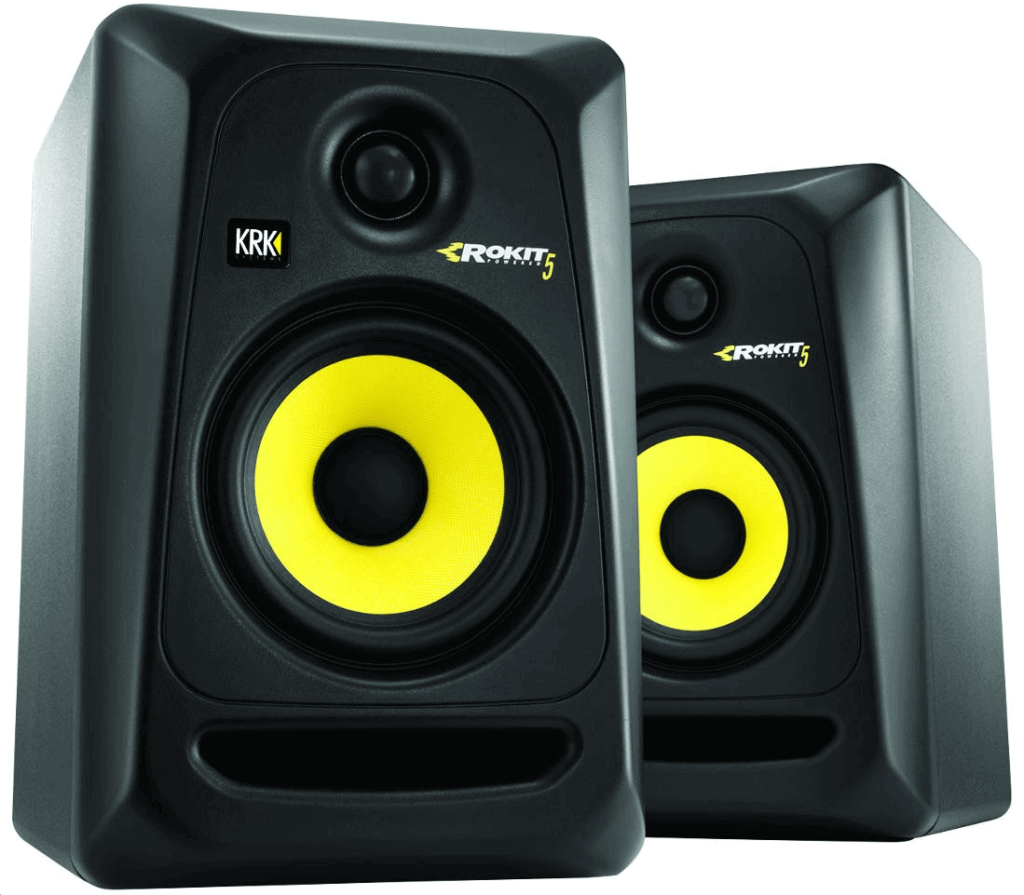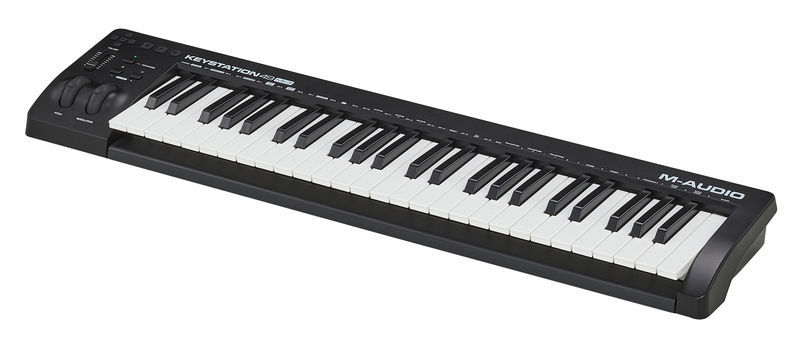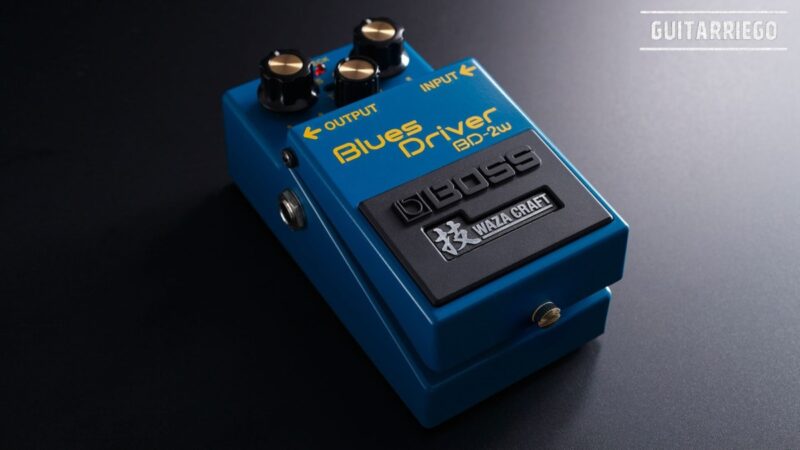Home Studio Guide: How to Build a Professional Recording Studio

Home Studio Guide, the 5 basic rules and tips and all the equipment you need to build your own professional recording studio.
What do you need to build your own Home Studio?
Putting together a basic Home Studio is simple, but doing it on a professional level, too! The basic requirements are to have a room with a table to put the equipment and some bills to invest. But the most important thing is to have basic knowledge on the subject, it will be useless if you have the best equipment in your Home Studio if you do not know how to use them.
What is a Home Studio?
A Home Studio is a recording studio set up in your home. More and more artists have a Home Studio to work on models and ideas. Even, many musicians also partially or totally record their discs at home. This happens not only because of the high costs of recording in a traditional professional recording studio, but also because of the convenience. This is possible thanks to the development of digital technologies related to recording equipment or hardware and software at affordable prices.
Why a Home Studio?
You will already know that recording in professional studios is highly expensive, and the vast majority of bands cannot afford it. Thanks to the evolution of digital technology, Homestudio is a great option. It allows you to record as many times as necessary without the pressure of the extra cost for every hour it takes. Also, you can play and try different possibilities and use more of the creativity of the group in the recording sessions. Good equipment will help you compose better, and make your music better known, that’s why we are going to give you some points where to start in this fantastic world of music recording and editing.
Accessibility of digital technology for music recording and editing
Today, thanks to the advances and accessibility of technology, we can have high-quality equipment at relatively little money. Something unthinkable about 20 years ago.
Thus, with the basic tools to assemble your own Home Studio that we will provide you here; With knowledge of music production, and dedicating time, good results can be obtained. A great example are the creators of electronic music Moby and the French Leeroy, who base their work mainly on productions made in their Home Studios.
It is important to know that a Home Studio is not exclusive to a professional Studio. You can take your recordings to a professional to improve a mix, or even re-record ideas or demos, or combine tracks recorded in Home Studio with others recorded in the traditional recording studio.
First steps to putting together a Home Studio
What do I need for a Home Studio?
The basic equipment to set up a quality home studio consists of the following, what we will call a basic recording kit:
- Computer: Mac or Windows PC
- Recording, mixing and editing software: DAW – Digital Audio Workstation
- Microphones
- Audio interface
- Monitors and / or Headphones
- Acoustic room treatment
- Cabling
- MIDI controller
This quick guide to recording equipment for Home Studio aims for a minimum quality. Therefore, the options are not the cheapest, but as the saying goes, cheap is expensive. The objective is to economize as much as possible but without sacrificing quality, we aim for a professional and affordable equipment.
The computer only has to meet the requirements of the software used, so we will not spend time on it. Generally speaking, any modern Apple Windows or Mac PC will meet the requirements, although it is always advisable to check it.
Regarding the DAW, the most important thing is to use one that we know how to use, there is no universal recommendation, each one has its needs and capabilities, so it is very personal. Here, we leave you a guide to the best programs for recording, editing and mixing music and audio -DAW- for free available on the market. In case yours is serious and you want to go to a paid one, you can see this guide to the best paid and free DAWs for Home Studio.
Best Cheap Professional Recording Equipment for Home Studio
1. Monitors
A very popular pair of monitors are the KRK Rokit 5 G4, which are an affordable option for mixing and which has become very common within home studios. Approximate price: USD 300 / € 360 / £ 229.

If you want to go for something superior, another good pair of monitors are the Yamaha HS5, a very good option to start making professional mixes. Its approximate price a little higher is USD 400.
2. Microphones

A good microphone to start with is the Audio Technica AT2035, excellent for recording vocals and acoustic guitars because its frequency response remains flat, only slightly emphasizing the high frequencies. Approximate price: USD 150.
Another microphone option that, although it is a bit more expensive than the previous one, also offers a very characteristic, clean and crystalline sound, is the AKG C214. Approximate price: USD 350.
These are two of the best microphones on the market for home recording studios.
3. Headphones
One of your best companions in the Studio are headphones, so a good choice is essential. An excellent option is the Audio-Technica ATH-M30. Approximate price: USD 40.

Another slightly more expensive alternative, which offers great quality and durability, are the Beyerdynamic DT 770. The DT 770s offer a very precise and clear sound, whether for monitoring or mixing. Approximate price USD 200.
4. Audio interface
The audio interface is an extremely important component of a Home Studio. This is because it is where the signal is converted from analog to digital, so a bad processor can be really critical within your recordings and seriously affect the quality of your work. A good option is the Scarlett 2i2 3rd Generation from Focusrite. It has a two-channel interface that offers very clear processing, and which is also recognized by the integrated preamps it has. Approximate price: USD 170.

Another more expensive option is the Universal Audio Apollo Twin interface, it is one of the best options for recording at an affordable cost. It also emulates different famous analog preamps and offers unmatched audio conversion. Approximate price: USD 560.
However, there are many options, for more information visit our guide to the best audio interfaces.
5. Acoustic treatment
It is very important to have a suitable place to record, without unwanted noise, interference, or reverberation.
For this, an acoustic treatment option is Auralex Roominators D36, which is a kit to condition a small room and obtain good results. Price approximately: USD 189.
6. Midi controller
Although it is not essential, it is very useful when producing. It will allow you to have more audio options. You can control any virtual instrument from the comfort of a keyboard. Discovering all the possibilities that the digital world offers us today is part of being a professional in music production.

A recommended keyboard is the M-Audio Keystation 49. It has a light and comfortable feel when playing and has 49 speeds (sensitivity). Approximate price: USD 100.
7. Wiring
Although there are factors that affect the audio much more than the wiring, it is very important to have good quality in the cable. Not only for the recording quality, but also for its durability.
A good option for XLR cables is the D’Addario Planet Waves Classic Series. Approximate price: USD 15.
Can I professionally work with this?
This equipment is a very good way to start developing within the world of music production. Of course you can, over time, acquire more and better equipment, but you will see that the investment, well used, will have excellent results. You will be able to record at an excellent level and this is a starting point for making professional recordings.
Remember that more important than recording equipment is the experience you have and how you use it.
The 5 basic rules for recording in your Home Studio
Finally, we will give you the 5 basic rules so that your Home Studio performs at its best. There are plenty of home studio ideas, but these are the rules you should always follow for a good home recording.
Zero noise
Remove all noise-emitting items. Electronic devices tend to make noise constantly, although our ears cannot appreciate it. Avoid acoustic dirt, lack of clarity, removing from the home recording studio everything that is not necessary, or moving them as much as possible or simply turning them off.
Conditioning the acoustics of the room
Condition the room where you are going to record. Consider not only acoustics of walls, but everything that can generate sound bounces. Tile, wood, aluminum and other materials can affect, causing a small echo in the recording. Homemade recipes: cover the floor with rugs, and the windows with curtains, and eliminate any elements that are not essential.
Microphones away from electronic equipment
Move the microphone away from your Mac or Windows PC. The screens also emit a slight hum that the microphones pick up.
The best recording software is the one you know how to use
Use recording software that you know how to use. There are many DAWs on the market, and choose the virtual recording console that best suits your needs and that you know how to use. Do not start recording in Protools if you do not know how to handle it, even if it is a professional recording software, you will not have good results.
Microphone location
Keep an eye on the microphone distance. The microphones are very sensitive, and if you record voices too close, your breath will have too much presence in the recording. It is also very good to use an anti popping filter, it will eliminate some frequencies and keep the same distance for all shots.
The reference prices were obtained from large online music equipment sales stores for home recording studios such as Amazon, Ebay and Thomann.
Do you have experience recording in a Home Studio? Tell us in the comment section below.






